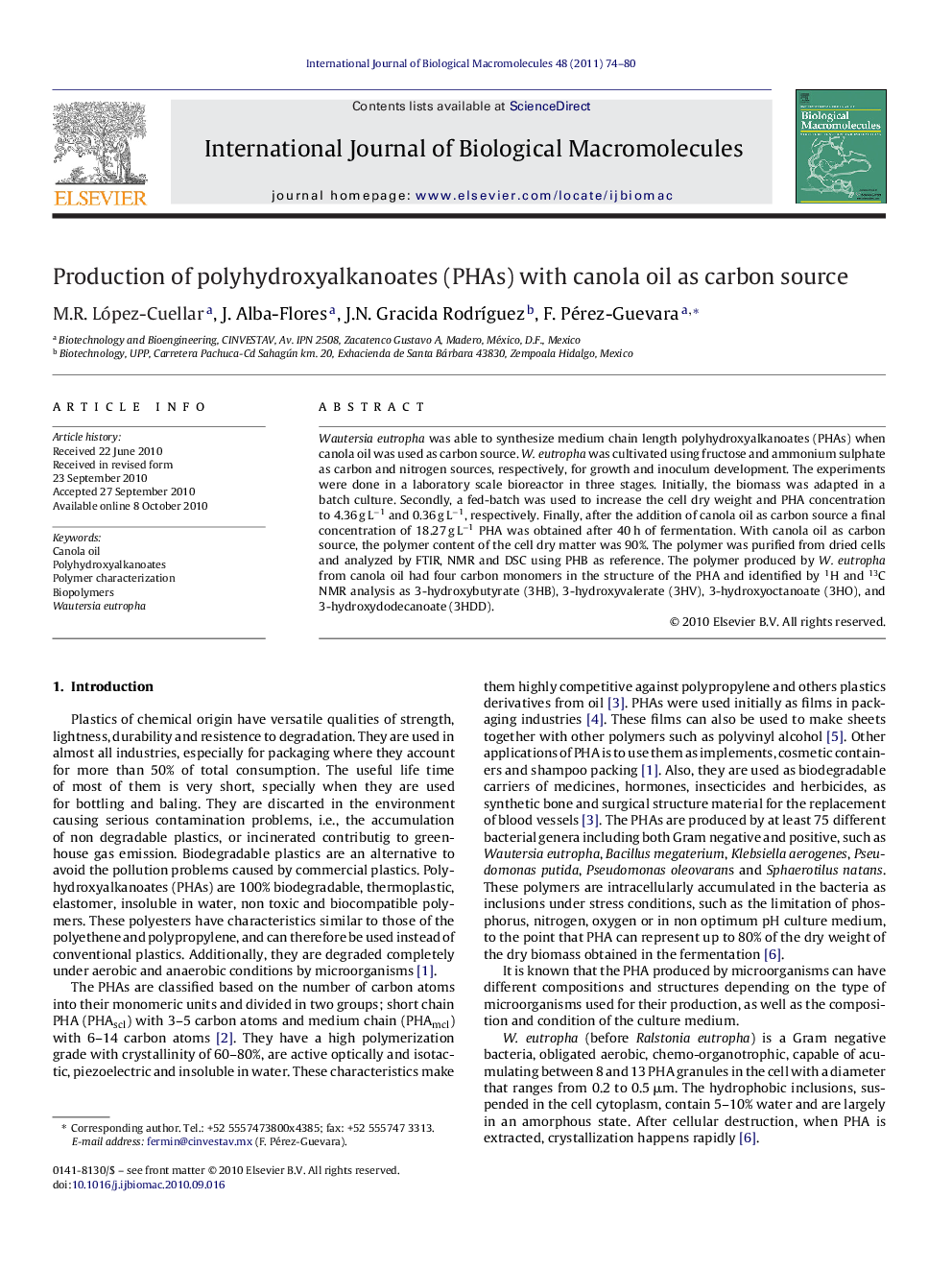| Article ID | Journal | Published Year | Pages | File Type |
|---|---|---|---|---|
| 1987289 | International Journal of Biological Macromolecules | 2011 | 7 Pages |
Wautersia eutropha was able to synthesize medium chain length polyhydroxyalkanoates (PHAs) when canola oil was used as carbon source. W. eutropha was cultivated using fructose and ammonium sulphate as carbon and nitrogen sources, respectively, for growth and inoculum development. The experiments were done in a laboratory scale bioreactor in three stages. Initially, the biomass was adapted in a batch culture. Secondly, a fed-batch was used to increase the cell dry weight and PHA concentration to 4.36 g L−1 and 0.36 g L−1, respectively. Finally, after the addition of canola oil as carbon source a final concentration of 18.27 g L−1 PHA was obtained after 40 h of fermentation. With canola oil as carbon source, the polymer content of the cell dry matter was 90%. The polymer was purified from dried cells and analyzed by FTIR, NMR and DSC using PHB as reference. The polymer produced by W. eutropha from canola oil had four carbon monomers in the structure of the PHA and identified by 1H and 13C NMR analysis as 3-hydroxybutyrate (3HB), 3-hydroxyvalerate (3HV), 3-hydroxyoctanoate (3HO), and 3-hydroxydodecanoate (3HDD).
